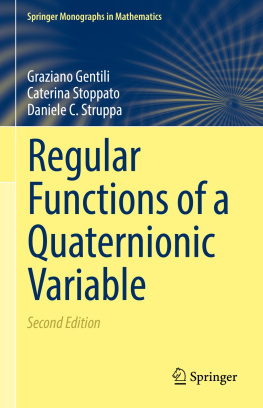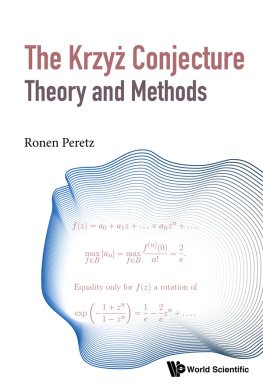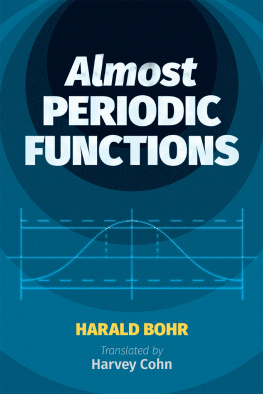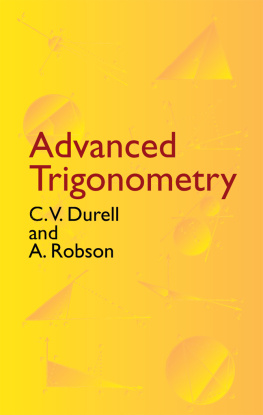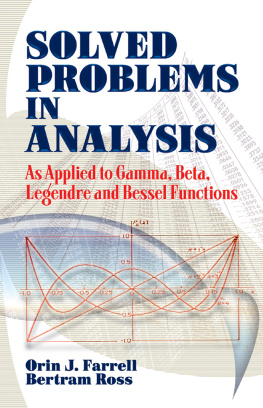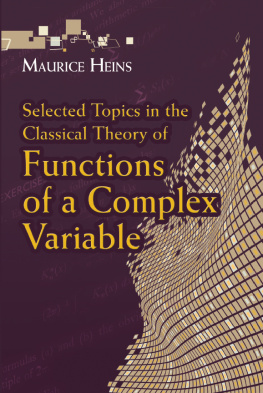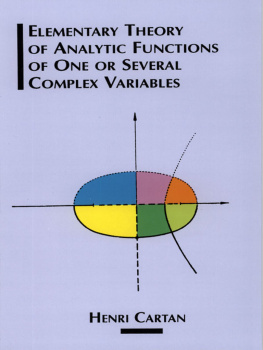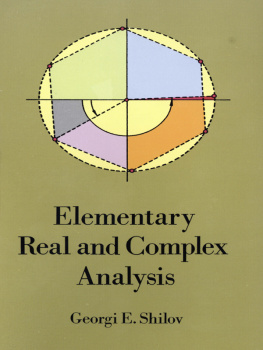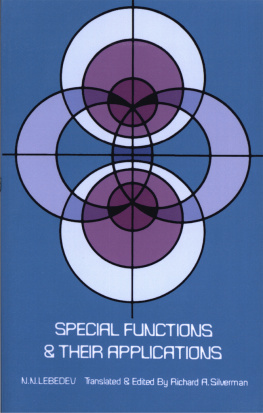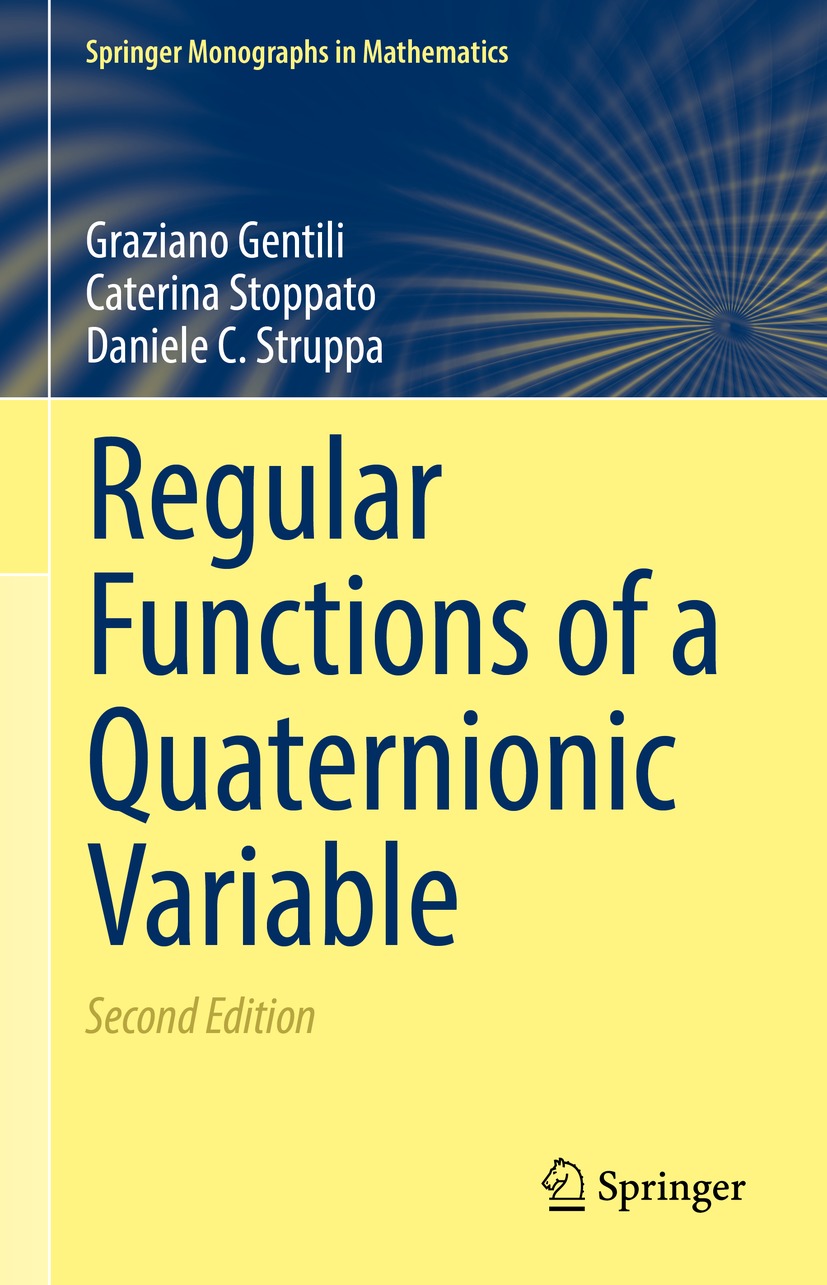Graziano Gentili - Regular Functions of a Quaternionic Variable
Here you can read online Graziano Gentili - Regular Functions of a Quaternionic Variable full text of the book (entire story) in english for free. Download pdf and epub, get meaning, cover and reviews about this ebook. year: 2022, publisher: Springer, genre: Romance novel. Description of the work, (preface) as well as reviews are available. Best literature library LitArk.com created for fans of good reading and offers a wide selection of genres:
Romance novel
Science fiction
Adventure
Detective
Science
History
Home and family
Prose
Art
Politics
Computer
Non-fiction
Religion
Business
Children
Humor
Choose a favorite category and find really read worthwhile books. Enjoy immersion in the world of imagination, feel the emotions of the characters or learn something new for yourself, make an fascinating discovery.
- Book:Regular Functions of a Quaternionic Variable
- Author:
- Publisher:Springer
- Genre:
- Year:2022
- Rating:5 / 5
- Favourites:Add to favourites
- Your mark:
Regular Functions of a Quaternionic Variable: summary, description and annotation
We offer to read an annotation, description, summary or preface (depends on what the author of the book "Regular Functions of a Quaternionic Variable" wrote himself). If you haven't found the necessary information about the book — write in the comments, we will try to find it.
This book surveys the foundations of the theory of slice regular functions over the quaternions, introduced in 2006, and gives an overview of its generalizations and applications.
As in the case of other interesting quaternionic function theories, the original motivations were the richness of the theory of holomorphic functions of one complex variable and the fact that quaternions form the only associative real division algebra with a finite dimension n>2. (Slice) regular functions quickly showed particularly appealing features and developed into a full-fledged theory, while finding applications to outstanding problems from other areas of mathematics. For instance, this class of functions includes polynomials and power series. The nature of the zero sets of regular functions is particularly interesting and strictly linked to an articulate algebraic structure, which allows several types of series expansion and the study of singularities. Integral representation formulas enrich the theory and are fundamental to the construction of a noncommutative functional calculus. Regular functions have a particularly nice differential topology and are useful tools for the construction and classification of quaternionic orthogonal complex structures, where they compensate for the scarcity of conformal maps in dimension four.
This second, expanded edition additionally covers a new branch of the theory: the study of regular functions whose domains are not axially symmetric. The volume is intended for graduate students and researchers in complex or hypercomplex analysis and geometry, function theory, and functional analysis in general.
Graziano Gentili: author's other books
Who wrote Regular Functions of a Quaternionic Variable? Find out the surname, the name of the author of the book and a list of all author's works by series.

